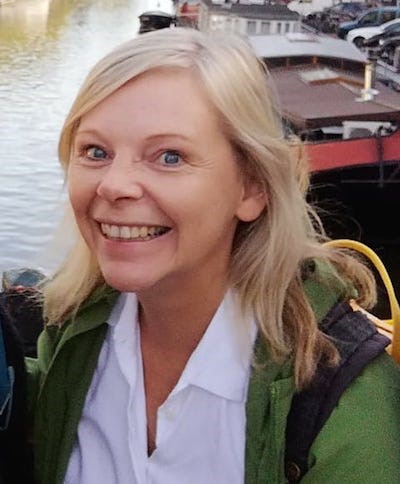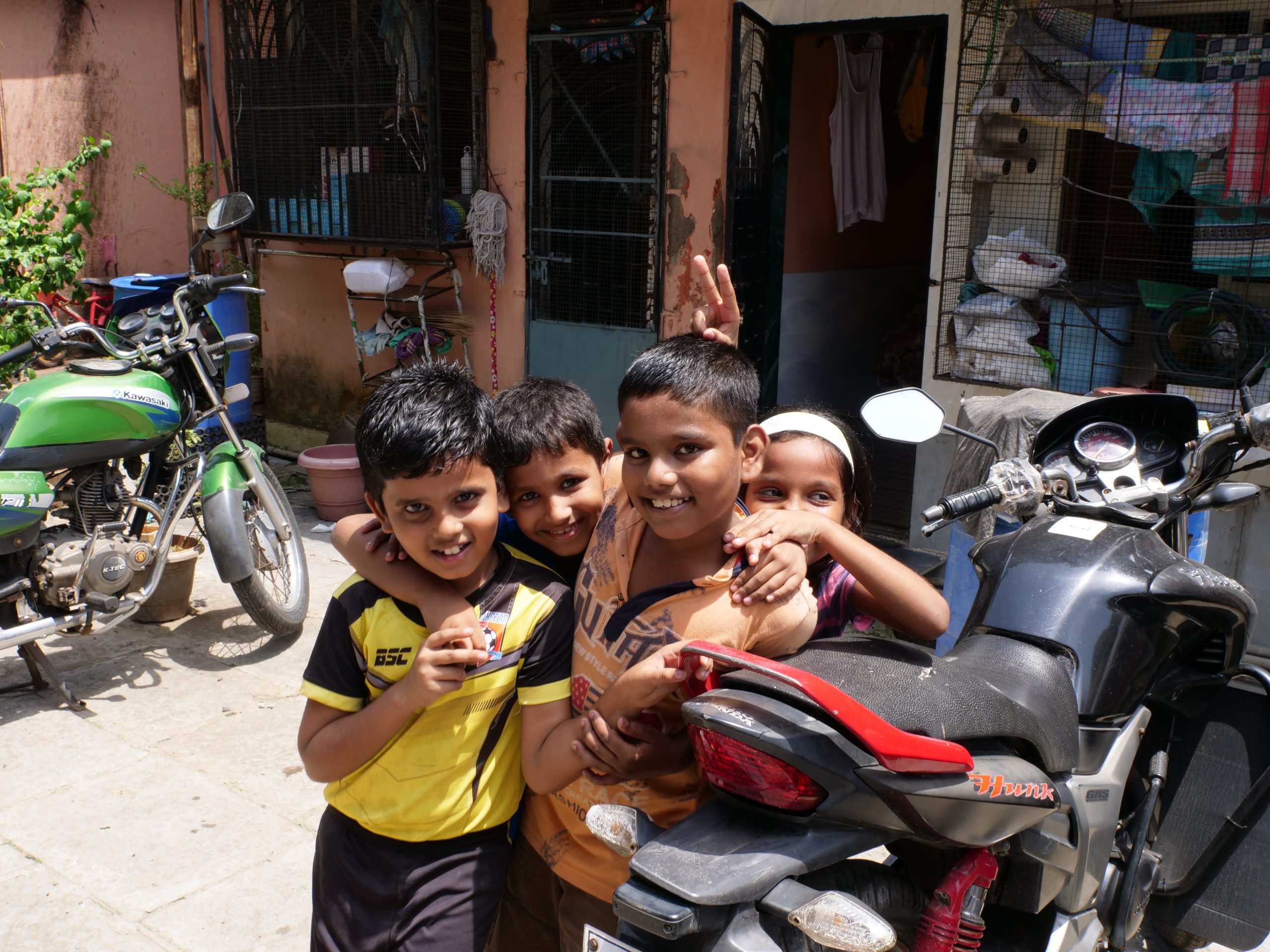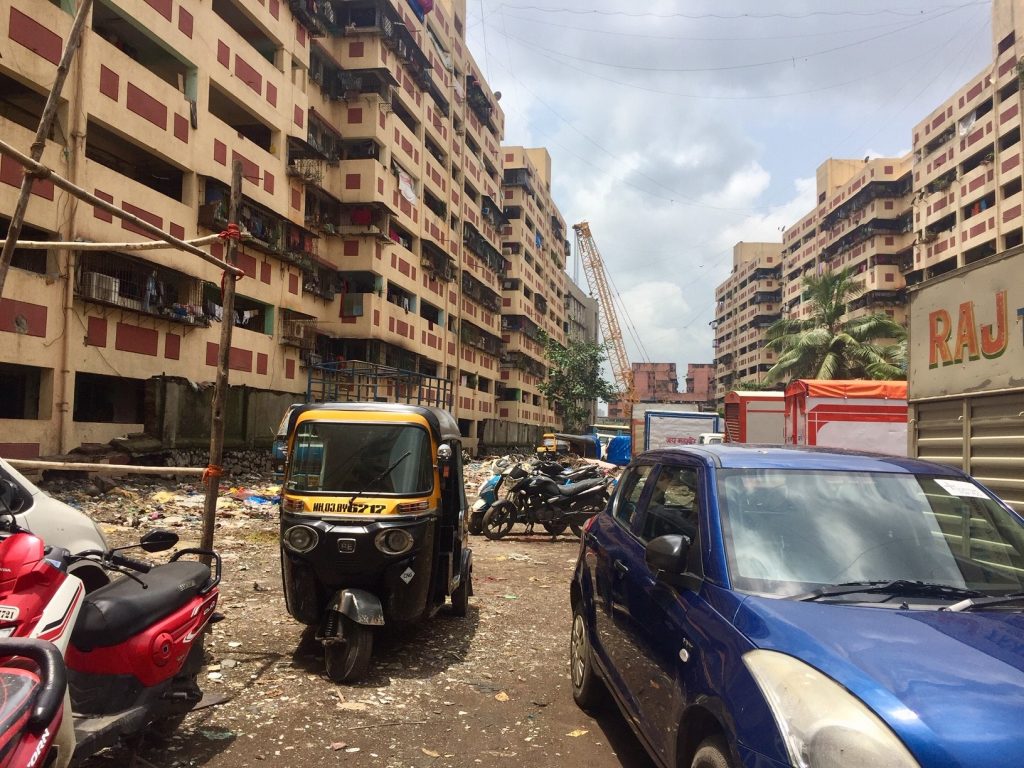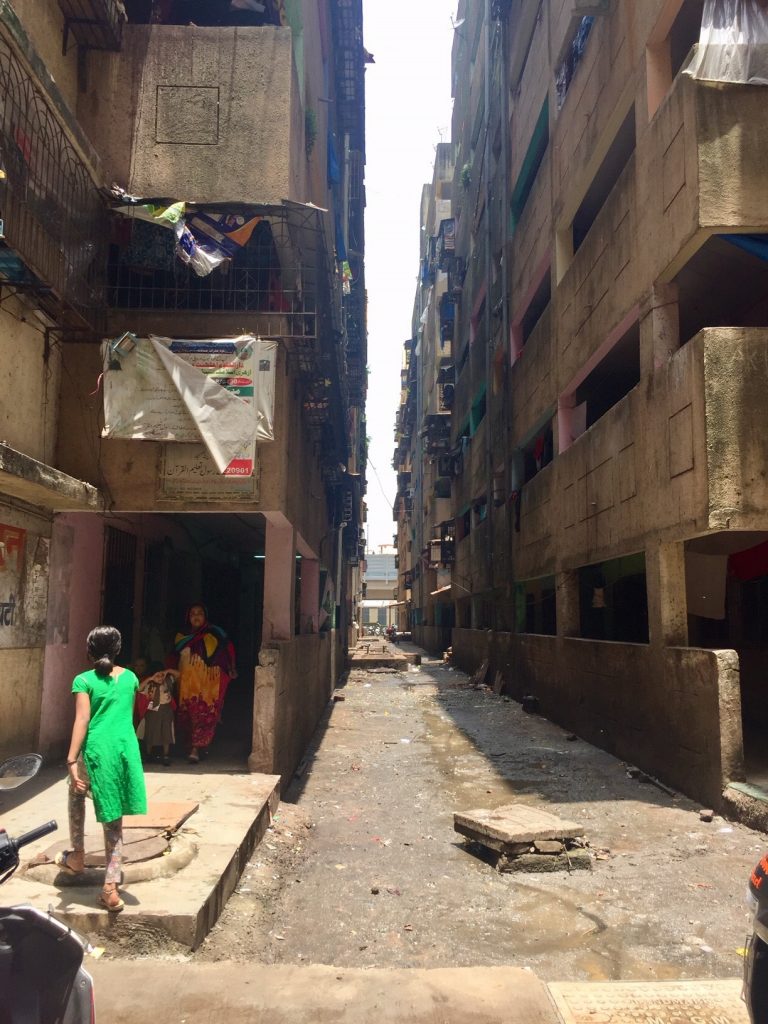This series of articles is a partnership between SPECIFIC, SUNRISE and the Active Building Centre. Our projects work with academic, industry and community partners in the UK and the Global South to research and develop solar technologies and to drive change in the construction industry.
While our projects each have distinct objectives and approaches, our shared message is simple: buildings don’t have to cost the Earth.

Our vision for transformation comes with many challenges across technical, political, social and economic norms. In this series we will share some of the work we’re doing to address each of these. This is the seventh blog, in which Dr Minna Sunikka-Blank talks about her research into energy use in slum rehabilitation housing in India.
Dr Minna Sunikka-Blank is a senior lecturer at the Department of Architecture, University of Cambridge. Her research focuses on the adoption of new energy technologies and how they can transform behaviours and cultures. She has recently joined the SUNRISE network to work with us as we engage with communities in India to install our solar-powered building demonstrators.
In your experience, how can new energy technology transform developing communities?
My own research has focused on slum rehabilitation housing in Mumbai that is built by the Slum Rehabilitation Authority, SRA. In SRA buildings most households are ‘energy poor’ meaning that they use more than 10% of their disposable income to pay for gas and electricity. When they have moved from informal settlements to SRA houses, their energy costs have gone up 6-10 times. For the poorest households this is a nearly unbearable burden, made worse by unreliable billing. These households have a lot of appliances: TVs , fridges, fans, even AC units. You could say they have middle class household energy use characteristics. Similarly, in rural settings households are going to want more appliances and more comfort. New solar technologies can mitigate this environmental and economic burden that comes from energy intensive lifestyles. If rural communities can be provided with solar energy technology that is cheap, reliable and also socially accepted, it can help to keep people in their villages and control rural-urban migration that leads to such serious housing problems that we observed in Mumbai.
From a social context, what are the most significant challenges facing the adoption of new energy technologies in developing communities?
Costs and lack of demand. What surprised me in Mumbai was that low income households tend to buy quality appliances from proper shops where they can get a warranty and pay in installments – it is not necessarily the cheapest models. Some households say, rather proudly, that it is their children who make the decision what to buy. Households are not necessarily rational in their decision-making so that they would buy the most efficient product or invest in a solar panel. However, even in poor communities everyone has a mobile phone with cheap data access so change can be very rapid. But if you ask women what they use their smart phone for, it is usually for watching soaps or communicating, they have not yet seen the potential to use it for work, shopping or empowerment.
How have you found women’s daily energy practices differ from men’s in low income houses? Why is it important to take these into account when introducing new technologies?
In all households that we surveyed in Mumbai, women do all households practices, even if they work outside the home. They cook three times per day, clean, look after children and do informal jobs, such as making hair pins at home. It is important to understand that at home, the impact of new technologies will be greater on women than men. Women need to accept the new technology and understand it. They may not necessarily be tempted by more data or smart technology. It might not even interest them. If we do not understand women’s daily routines and underlying cultural norms that influence them we might develop technologies that go against practices. This is not only about products but also building design. I can give you an example: in SRA housing tenements have sliding windows but because of single aspect orientation, windows open to a public gallery and women tend to keep them closed, preventing natural ventilation that then causes all sorts of problems. Some believe that food gets bad if a neighbor looks at it. Closed windows are then compensated with fans and electric lights.
How can we ensure any new technologies introduced, such as ‘Active Buildings’, have a lasting & sustainable impact in developing communities?
There needs to be engagement with local communities. Even so it is not easy to get everyone’s voice heard. SRA rehabilitation policy looks great on paper and each SRA housing cooperation has to have female representatives. But we observed that including women did not necessarily yet give them a voice. Only completely female-led cooperatives were able to drive issues that were important for women in the community, such as childcare and tidying up communal spaces. In Mumbai our NGO partner Doctors For You was crucial in reaching the community and involving local collaborators who have the trust of the community and work in the field, is incredibly important.
Watch the video below for more information on how SUNRISE, SPECIFIC, and the Active Building Centre work together to show how buildings can be designed differently:
Read other blogs in this series with SPECIFIC and the Active Building Centre:
Blog #1: Public involvement with a community in India: Q&A with Carol Maddock and Khushboo Ahire
Blog #2: Designing Active Buildings
Blog #3: The Active Classroom: still providing insights and performing well
Blog #4: Translating ‘Active Buildings’ to India: Q&A with Arunavo Mukerjee
Blog #5: Active Buildings for Future Generations
Blog #6: Solar Heat Storage: Eliminating Gas Heating



